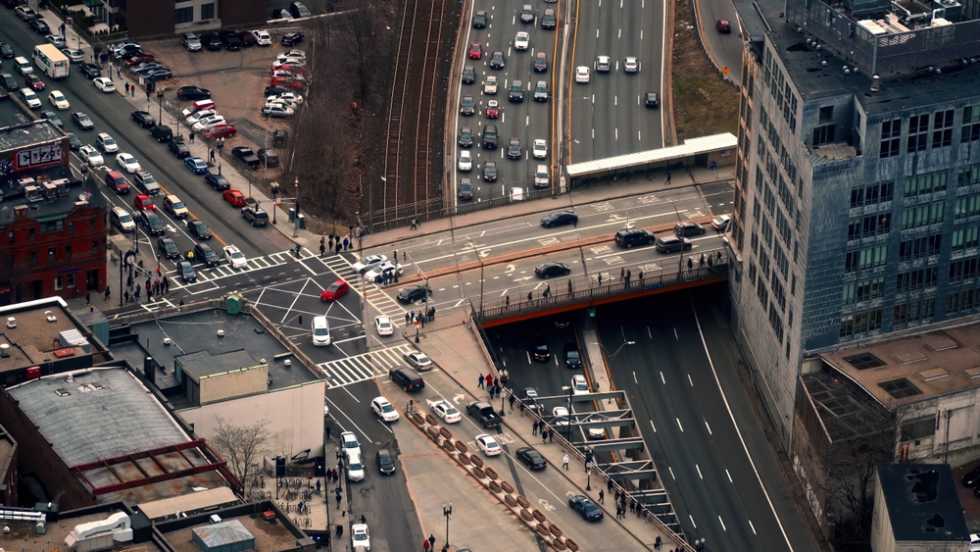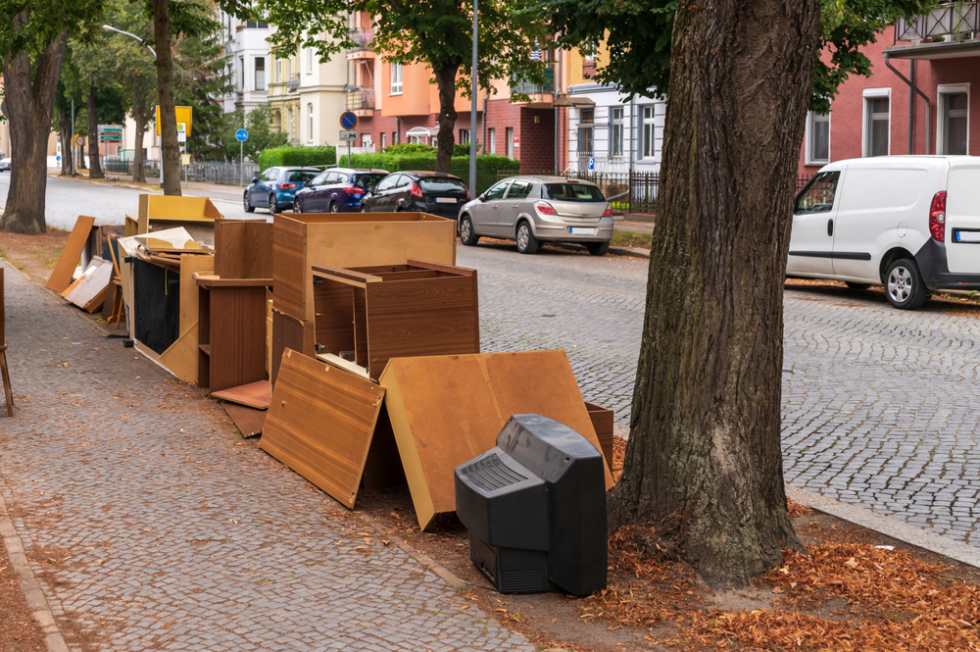Devonshire
- 44 units available
- 1 bed • 2 bed
- Amenities
On-site laundry, Patio / balcony, Hardwood floors, Dishwasher, Cats allowed, Garage + more

Boston’s “Moving Day” happens every year on September 1st, when the city experiences a massive turnover of rental units. It’s a uniquely Boston phenomenon. More than two-thirds of leases begin or end on this single day, especially in student-heavy neighborhoods like Allston, Fenway, and Mission Hill.
For renters, that means organized chaos. Streets overflow with moving trucks, sidewalks pile high with discarded furniture, and traffic slows to a crawl. But with the right prep and timing, you can avoid the stress, scoop up free stuff, and settle in smoothly.
This guide breaks down everything you need to know: what “Moving Day” really is, how to prepare like a local, where to find free furniture, and how to protect yourself from the classic Boston blunders, like getting “Storrowed.”
Let’s make your move efficient, stress-free, and maybe even fun.
“Moving Day” in Boston is the unofficial—but very real—rental turnover day held annually on September 1. That date has become deeply ingrained in Boston’s housing cycle. Many leases begin and end that day, especially in neighborhoods dense with student renters (and renters in general).
The phenomenon of massive lease turnover is known locally as Allston Christmas, a reference to the huge piles of furniture, appliances, and household goods left on the curb during this time. In neighborhoods like Allston and Brighton, residents and scavengers haunt the sidewalks, picking up usable finds as others move out.
Historically, the tradition dates back more than a century. Early mentions of September 1 as a mass moving date appear in Boston newspapers from the late 1800s. Over time, landlords, universities, and property managers have aligned leases to the academic calendar, cementing the date.
Today, an estimated 70% of leases in Boston turn over on September 1st, meaning a vast majority of the city’s renters are moving all at once.
Expect chaos, crowds, and curbside couches. If you’re moving (or helping someone move) in Boston around September 1, brace yourself for one of the most frenetic rental days in the country. Traffic snarls, sidewalks overflowing with discarded furniture, and mounting pressure to get things done before dusk are all part of the ritual. Here’s how it typically unfolds—and what you’ll want to prepare for.
Boston’s narrow streets weren’t built for a fleet of moving vans. Thousands of trucks converge on the same neighborhoods, competing for limited curb space. Double-parking becomes routine, which makes side streets even worse. Many streets require moving permits, and without one, you risk fines or being towed. You’ll want to scout permit requirements ahead of time and reserve space early where possible.

One of the most famous (and infamous) rules of Boston Moving Day: never trust your GPS. Many moving trucks hit low-clearance bridges on Storrow Drive, a mishap known as “getting Storrowed.” Maps often direct vehicles along the shortest route, not the legal one. Avoid Storrow Drive altogether and always plan east-west or alternate access routes.
Streets with Notable Low Bridge Clearances
| Street / Route | Clearance (Approx.) | Notes |
|---|---|---|
| Storrow Drive (underpasses) | ~10 ft or less (varies) | Frequent strike area for box trucks |
| Soldiers Field Road underpasses | ~11 ft | Often used as a detour route |
| Charles River Dam Bridge | ~9–10 ft | Not recommended for commercial trucks |
| Beacon Street underpasses | ~10 ft | Narrow, tight curves—risky for long loads |
By dawn, sidewalks in many neighborhoods transform into treasure hunts or obstacle courses. Mattresses, sofas, desks, TVs, and knickknacks are left on curbs, ready for passersby to pick up, or trash collectors to haul off. Some items are perfectly usable, while others are beaten, moldy, or pose bedbug risks. Be selective, bring gloves, and inspect items closely before hauling them home.
What would normally take 10 or 15 minutes can stretch into 60 or 90 on Moving Day. Streets near colleges, like Boston University, Northeastern, and Harvard, are especially congested. Backups ripple outward from main arteries into side streets, with every turn slowed by double-parked trucks and loading slowdowns.
If you’re moving in, give yourself full extra hours, or better yet, move mid-morning to spread out the load.
Planning early is your superpower. The more you can line up in advance, the less you’ll panic on September 1. Below are six key prep steps, each with practical tips and Boston‑specific constraints.
Boston requires a moving permit to reserve street curb space legally.
You’ll need to apply via Boston.gov’s moving permit page well in advance (ideally 2 to 3 weeks before your move). The permit will specify times and locations where trucks can park. Without one, your mover may risk fines or towing. If possible, attach a copy of the permit visibly to your moving van to avoid confrontations.
Moving trucks disappear fast in Boston, especially near colleges or in high-rent neighborhoods. Use trusted platforms like U-Haul, Penske, or HireAHelper to reserve your truck at least a month out.
Be mindful of truck size and height. You don’t want to rent something too big for Boston streets. Confirm that the truck comes with moving dollies, tie-downs, and blankets, as many renters forget these packing essentials.
Storrow Drive is notorious for low-clearance bridges. Never rely on GPS alone—set your directions manually and insert “NO STORROW” or similar restrictions. Use the Mass Pike (I‑90) or other main arteries to bypass downtown bridges. Review local height restriction maps ahead of time so your route avoids risky underpasses altogether.
Boston’s weather can be unpredictable. Pack essentials like tarps, water, gloves, umbrellas, and a fan for hot, humid conditions. Store clothing, pillows, and linens in sealed plastic bags or containers so they stay dry. If a severe storm is forecast, arrange alternate dates or extra hands to protect fragile items.
If you’re ditching furniture, don’t wait until the last second—many donation services fill up fast on Moving Day. Contact GreenDrop, Habitat for Humanity ReStore, or Boomerang’s a week ahead. If you’re hunting free finds, map out key stretches in Allston or Brighton early—some items vanish within hours after sunrise.

Allston Christmas is real—and if you time it right, you can furnish your place for free. Every September 1st, sidewalks across Boston overflow with couches, bookshelves, kitchen gear, and more. But to come out on top, you’ll need location smarts, timing, and a discerning eye.
Allston and Brighton are ground zero for free furniture.
On streets like Ashford Street, Brighton Avenue, and those near student housing complexes, you’ll see couches, dressers, desks, and miscellaneous household goods lined up for pickup. Go early. Some of the best pieces disappear before dawn. Bring gloves and tools to test pieces immediately.
These neighborhoods see high turnover, too, especially among graduate students or renters switching apartments.
In Mission Hill or Fenway, you’re more likely to spot smaller, manageable items like lamps, chairs, nightstands, or media racks. Walk side streets and alleys. Sometimes gems are tucked behind dumpsters or apartment vestibules.
If you’re willing to venture beyond the core, you may find higher-quality free furniture in South Boston or Cambridge. Items here tend to be more eclectic. Look near student-heavy zones plus more residential blocks, where movers sometimes offload items rather than dragging them to the curb.
Don’t rely solely on the curb. Join local online communities ahead of time:
Many people post high-quality items early (before they even hit the sidewalk), with photos and pickup instructions.
Even free furniture comes with caveats.
| Item / Feature | Check Before Keeping | Skip If … |
|---|---|---|
| Couch / Sofa | Frame solid, springs intact, cushion support | Smell of mold, sagging frame, stains that won’t clean |
| Wooden Furniture | No cracks, joints tight, wood not warped | Major water damage or broken parts |
| Upholstered Chairs / Rugs | Clean fabric, no holes or stains, seams intact | Evidence of pests, heavy odor, broken frame |
| Shelves / Bookcases | Level, stable, no missing hardware | Weak joints, missing screws |
| Kitchen / Small Appliances | Plug in to test, check settings | Rust, missing parts, non-functional |
If you go in with a plan and some healthy skepticism, you can walk away with great finds, and avoid the nightmare of bedbugs, unusable furniture, or wasted time.
Boston’s Moving Day is part chaos, part community tradition. Yes, the streets get gridlocked, and furniture ends up on sidewalks, but it’s also a rite of passage for thousands of renters and students across the city. With the right preparation and timing, you can avoid the worst of the stress and even score some great curbside finds.
Plan ahead, avoid Storrow Drive, book early, know what to expect, and you’ll come out on top.
If you want to skip the scramble next year, take Apartment List’s personalized apartment quiz to find Boston rentals that fit your timeline, your budget, and your lifestyle. You can even filter for neighborhoods that don’t follow the September 1st madness.
Most Boston leases, especially near universities, start or end on September 1st to align with the academic calendar. This tradition creates one massive citywide turnover event.
“Allston Christmas” is the local nickname for the flood of free furniture and goods left on curbs during Boston’s Moving Day, especially in the Allston-Brighton area. Renters pick through items left behind during lease transitions.
Yes. Moving without a city-issued permit can result in parking tickets, towing, or fines. Boston requires moving permits for most areas, especially on congested streets during the September rush.
Use Boston 311 (via phone, app, or website) to report abandoned items, blocked sidewalks, or traffic violations during Moving Day.
Smaller trucks (10–15 feet) are safest for city driving. Many Boston streets have tight turns, low bridges (especially near Storrow Drive), and dense parking, so avoid anything over 20 feet if possible.

On-site laundry, Patio / balcony, Hardwood floors, Dishwasher, Cats allowed, Garage + more
In unit laundry, Patio / balcony, Hardwood floors, Dishwasher, Pet friendly, Garage + more